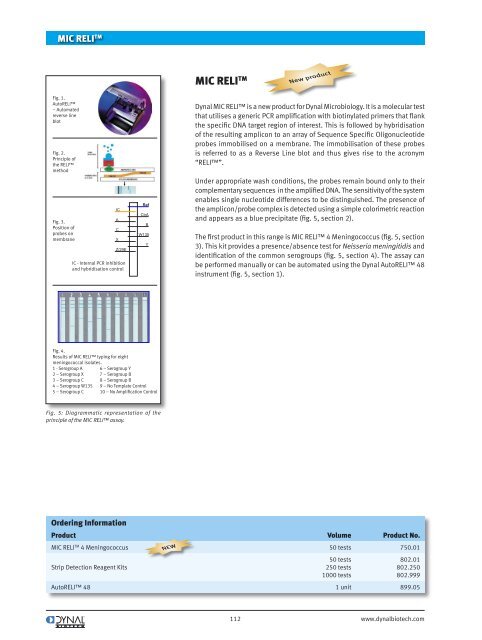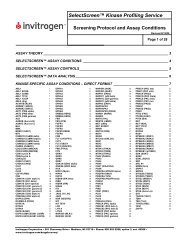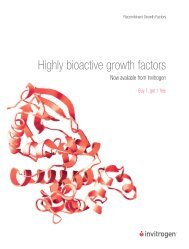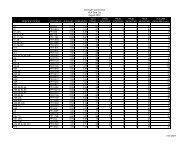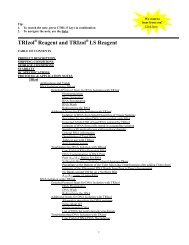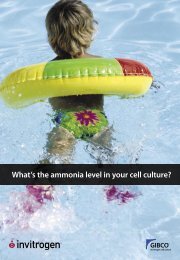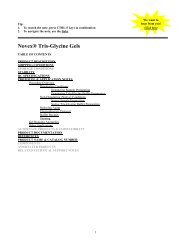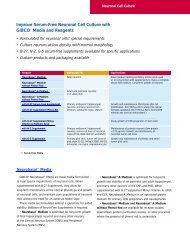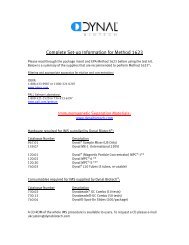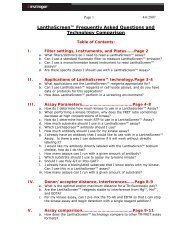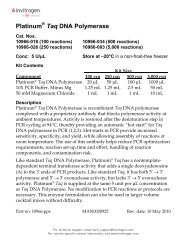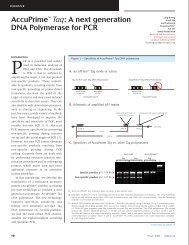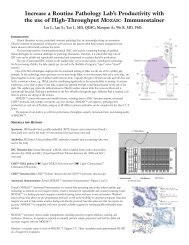10. Microbiology - Invitrogen
10. Microbiology - Invitrogen
10. Microbiology - Invitrogen
You also want an ePaper? Increase the reach of your titles
YUMPU automatically turns print PDFs into web optimized ePapers that Google loves.
MIC RELI TM<br />
Fig. 1.<br />
AutoRELI<br />
– Automated<br />
reverse line<br />
blot<br />
Fig. 2.<br />
Principle of<br />
the RELI<br />
method<br />
Fig. 3.<br />
Position of<br />
probes on<br />
membrane<br />
Fig. 5: Diagrammatic representation of the<br />
principle of the MIC RELI assay.<br />
IC<br />
Ordering Information<br />
MIC RELI TM<br />
Product Volume Product No.<br />
MIC RELI TM 4 Meningococcus 50 tests 750.01<br />
Strip Detection Reagent Kits<br />
A<br />
C<br />
X<br />
Z/29E<br />
IC - Internal PCR inhibition<br />
and hybridisation control<br />
Fig. 4.<br />
Results of MIC RELI typing for eight<br />
meningococcal isolates.<br />
1 - Serogroup A<br />
2 – Serogroup X<br />
3 – Serogroup C<br />
4 – Serogroup W135<br />
5 – Serogroup C<br />
Ref<br />
CtrA<br />
B<br />
W135<br />
6 – Serogroup Y<br />
7 – Serogroup B<br />
8 – Serogroup B<br />
9 – No Template Control<br />
10 – No Amplification Control<br />
Y<br />
NEW<br />
112<br />
New product<br />
Dynal MIC RELI is a new product for Dynal <strong>Microbiology</strong>. It is a molecular test<br />
that utilises a generic PCR amplification with biotinylated primers that flank<br />
the specific DNA target region of interest. This is followed by hybridisation<br />
of the resulting amplicon to an array of Sequence Specific Oligonucleotide<br />
probes immobilised on a membrane. The immobilisation of these probes<br />
is referred to as a Reverse Line blot and thus gives rise to the acronym<br />
“RELI”.<br />
Under appropriate wash conditions, the probes remain bound only to their<br />
complementary sequences in the amplified DNA. The sensitivity of the system<br />
enables single nucleotide differences to be distinguished. The presence of<br />
the amplicon/probe complex is detected using a simple colorimetric reaction<br />
and appears as a blue precipitate (fig. 5, section 2).<br />
The first product in this range is MIC RELI 4 Meningococcus (fig. 5, section<br />
3). This kit provides a presence/absence test for Neisseria meningitidis and<br />
identification of the common serogroups (fig. 5, section 4). The assay can<br />
be performed manually or can be automated using the Dynal AutoRELI 48<br />
instrument (fig. 5, section 1).<br />
50 tests<br />
250 tests<br />
1000 tests<br />
802.01<br />
802.250<br />
802.999<br />
AutoRELI 48 1 unit 899.05<br />
www.dynalbiotech.com


